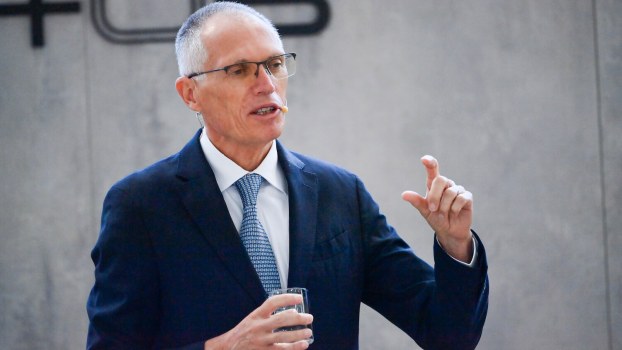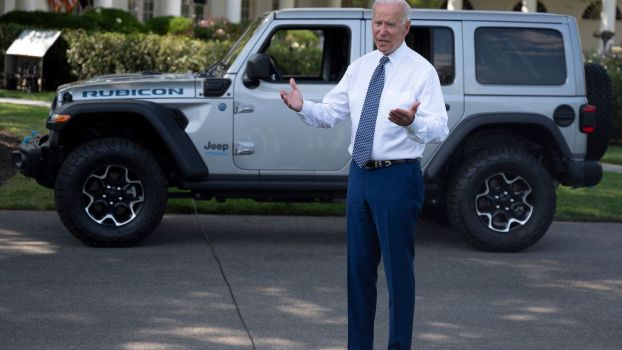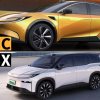
Canada Is Killing Combustion Cars
Canada will likely be the first country in North America to pass a combustion ban. Sources inside the government have revealed that a new law targets the ambitious timeline set by the state of California. And in some ways this law will be even more aggressive. Canada will require automakers not just to offer a certain percentage of zero emissions vehicles, but to actually sell them.
As it stands, only 3.5% of new vehicle sales in Canada are EVs. In the United States, that number is 7.5% and EVs make up 1% of all vehicles on the road. The Canadian government has wanted to to catch up for years:
“We are committed to aligning Canada’s zero-emission vehicles sales targets with those of the most ambitious North American jurisdictions.”
Canadian Environment Minister Jonathan Wilkinson, Reuters
By 2021, Canada was kicking around interim EV sales targets for 2025 and 2030. It was targeting net-zero emissions by 2050 (Reuters).
Then Britain passed a law to ban all fuel-powered vehicles from 2030. California announced its 2035 ban and several U.S. states followed suit. The Canadian province of Quebec also passed a 2035 ban. Finally, the province of British Columbia passed a 2040 ban. After these provinces demonstrated public support for a combustion ban, it’s not shocking that Canada is moving ahead with a nationwide combustion ban.

The law is rumored to be called the “Electric Vehicle Availability Standards,” and it differs from U.S. states’ latest laws in some important ways. For example, Colorado requires that a certain percentage of the vehicles on dealer lots be EVs. These percentages will increase over time. Dealerships might need to keep a big inventory of EVs, but its fine if their customers keep choosing ICE vehicles. Canada is taking a different approach.
A source inside the government told the Toronto Star that as soon as 2026, automakers operating in Canada must be selling 20% “zero emissions vehicles.” By 2030 that number will be 60%. Finally, in 2035, that number will be 100%. There are several key elements of this new law that are still unclear.
We do know that the Canadian government plans to build 84,500 EV chargers by 2029. Let’s hope these are the latest DC fast chargers, so they can keep up with future EVs.
We also know Canada will offer automakers credits for going above-and-beyond. They can start selling EVs now or install chargers to get credits and these will offset future sales if they fall short of the quotas. In a pinch, automakers can even purchase credits from one another. But Canada will still require the industry as a whole to hit its quotas.
Here are the things we don’t know:
First of all, The Star’s source says the Canadian law defines ZEVs as “battery electric, hydrogen and plug-in electric vehicles.” If by “plug-in electric,” it means “plug-in hybrid electric vehicles” with both an electric and internal combustion drivetrain, how much EV range do they need to qualify? In this international game of journalistic telephone, we don’t yet have a clear answer. But 100% PHEV by 2030 is not as drastic a goal as 100% pure EV. PHEVs are still much cheaper. And because daily commutes make up the vast majority of trips in North America, PHEVs with 30-50 miles of electric range would make most drives emissions free.
In many ways, an immediate PHEV mandate is a much wiser solution than a full combustion ban in the distant future.
Secondly, when Canada was first discussing a combustion ban in 2021, the government referred to “cars and light trucks.” Will internal combustion trucks the size of the Ford Super Duty be allowed? What about diesel semi trucks? What about trains? The Canadian government is likely waiting to see what vehicles are available in 2030. Very possibly, the current Tesla semi trucks can’t haul anything heavier than potato chips over 100 miles, and aren’t ready to take over the industry.
Will Canadian drivers be allowed to buy a gas-burning heavy duty pickup truck for their daily commute? We’ll just have to wait and see what other laws the Canadian government passes.

Not everyone is happy with the wording of the rumored law:
“What the mandate does is it forces a ratio of EV sales that is completely unrealistic given the current affordability challenges facing Canadians and the charging infrastructure gap…And that’s not feasible…Rather than dictate which technologies have to be used, we should use the existing emissions regulations which Canada has aligned with the United States and make them increasingly stringent. And then you leave it up to the market and automakers to innovate, to reach those emissions reductions objectives…That’s the best approach.”
Brian Kingston, president and CEO of Canadian Vehicle Manufacturers’ Association
What does Kingston mean by “dictate which technologies can be used”? He’s referring to the recent E.U. emissions regulations.
Earlier this year, the European Union was considering a combustion ban until Germany voted it down. Because of Porsche’s lobbying.
Porsche, and other German automakers, are developing an emissions-free synthetic gasoline. Currently, it can only be made in a lab and costs about $16 a gallon. It’s not a good solution for commuters, but could preserve combustion supercar sales–and internal combustion motor racing.
These automakers argued that the government has every right to limit emissions, but telling automakers what technologies they can and can’t use to meet these requirements kills the innovative spirit of the free market. So lawmakers passed an “emissions ban” that goes into effect in 2035. It looks like at least the wealthiest Europeans will be able to still buy and drive “zero emissions” combustion cars.
No such luck in Canada: the Canadian law is a true combustion ban, and thus limits the technologies automakers can use to meet new emissions requirements.
Next, read about a possible alternative to a future combustion ban, or see CTV debating whether Canadians are ready to drive EVs in the video below:






